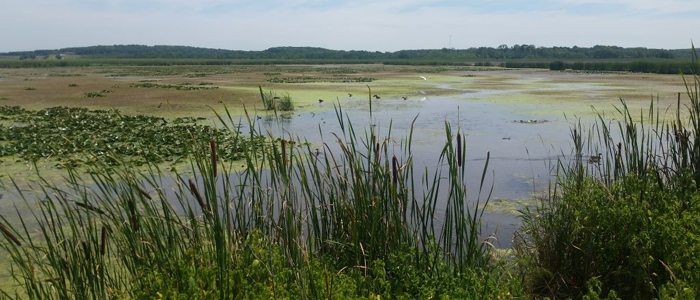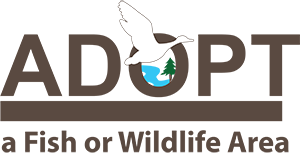Mullet Creek Wildlife Area
Mullet Creek Wildlife Area is a 2,217-acre property located in east-central Fond du Lac County. The wildlife area is located 15 miles east of Fond du Lac and 10 miles west of Plymouth on Highway 23. Travel south of Highway 23 on County Trunk G for 1 mile to the northeast corner of the wildlife area. This is where Mullet Creek flows under County Trunk G.
Mullet Creek Wildlife Area consists of a rich array of wetland, forest, grassland and farmland. Mullet Creek flows through the entire property, eventually joining the Sheboygan River. The central portion of this property consists of shallow open water with submerged vegetation and a cattail wetland totaling over 700 acres. Sedge, reed canary grass, willow, dogwood, swamp conifers and swamp hardwoods occur in the lowland areas. The uplands of the property contain forested stands of oak, aspen and hardwoods as well as grasslands and farm fields. Common wildlife species found on this property are white-tailed deer, woodcock, wild turkey, squirrels, rabbits, and numerous waterfowl and shorebird species.
The Mullet Creek White Cedar Wetland State Natural Area is located within the Mullet Creek Wildlife Area. The 200-acre hard-water seepage lake is surrounded by a wetland complex of tamarack, shrub carr, sedge meadow, and swamp forest. The lake and swamp complex is the headwaters of the Mullet River in the priority watershed of the Sheboygan River. This undeveloped inland lake with intact wetland vegetation provides an important breeding, nesting and migratory habitat for numerous bird, reptile and amphibian species. Also, Mullet Creek Wildlife Area is located in the middle to north Kettle Moraine Priority Conservation Opportunity Area [PDF] — a terrestrial opportunity area of continental significance within the Southeast Glacial Plain Ecological Landscape.
Management Objectives
Mullet Creek watershed was formed by glacial activity during the Wisconsin glacial period, some 10,000 years ago. It is an extension of the Kettle Moraine landform. The topography of the property is characterized by a broad, flat basin through which the Mullet Creek flows. Rolling drumlins surround this floodplain. Mullet Creek was periodically stocked with trout until the mid-1950s. A beaver colony constructed a dam on the creek just west of the Sheboygan County line and flooded an extensive area. The flooded area created by the beaver dam was a haven for waterfowl, primarily, mallard, wood duck and blue-winged teal. In 1958, the Wisconsin Conservation Commission designated it as state property. Land acquisition began in 1960 and continues today.
Grasslands are maintained annually in the wildlife area by prescribed burning, mowing, and haying. This is necessary to maintain the vigor of the grasslands but also set back brush and tree encroachment. The implementation of a sustainable forest habitat management program has been developed for the wildlife area. A more active timber management program will be used to manage the different forest types benefiting the forest-dwelling wildlife species on the property. Wetlands are managed to provide a hemi-marsh habitat with drawdowns, pesticide treatments and mechanical crushing of cattails to provide open water and promote native plant species.
Recreation
The Mullet Creek Wildlife Area offers many recreational opportunities:
- Birding
- The wetlands host an array of species including black-crowned night herons, black terns, least bitterns and shorebirds. Prairies provide nesting areas for bobolinks, meadowlarks, dickcissels and other grassland birds. The lowland forests host an array of migrating warblers.
- Canoeing
- Cross-country skiing (no designated trail)
- Fishing
- Hiking (no designated trail)
- Hunting (noted for waterfowl, wild and stocked ring-necked pheasant, wild turkey, cottontail rabbit, gray and fox squirrel, ruffed grouse, woodcock, mourning dove, red fox, coyote, raccoon and deer)
- Snowmobiling trail
- Trapping
- Wild edibles/gathering
- Wildlife viewing
Camping opportunity is provided at a private campground located 1/2 mile east of the wildlife area as well as at the 30,000-acre Kettle Moraine State Forest-Northern Unit, about 5 miles south, near Dundee. A favorite spring activity in the wildlife area is the hunting and gathering of morel mushrooms.
Amenities
- Bathroom - none.
- Parking lot - yes, multiple throughout the property.
- Campground and size - see above under recreation.
- Trails, Types and Lengths - non-designated only.
Maps
Download [PDF] a map of this property.
If you are interested in exploring this property further, you can access an interactive map.
Find out more about how to adopt this wildlife area.


